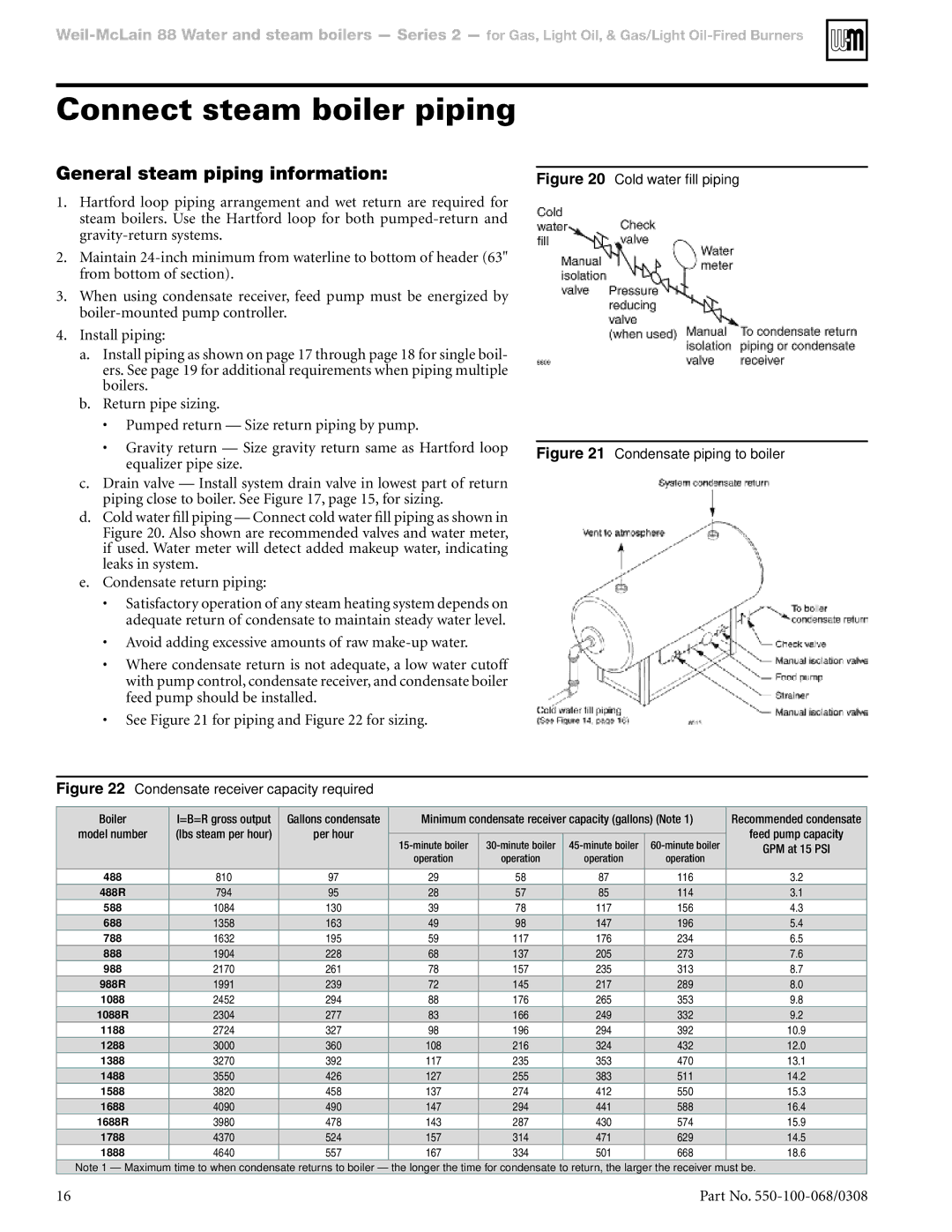88 specifications
The Weil-McLain 88 series is a commercial cast iron boiler recognized for its durability, efficiency, and versatile design, making it a preferred choice for various heating applications. Designed primarily for commercial and industrial use, the Weil-McLain 88 combines advanced technology with proven engineering principles to deliver reliable performance and long-lasting service.One of the standout features of the Weil-McLain 88 is its cast iron construction. Cast iron is renowned for its ability to retain heat, resulting in lower fuel consumption and more consistent heating. This robust material ensures that the boiler can withstand high temperatures and pressures, making it suitable for heavy-duty applications. The sectional design of the boiler allows for easy installation and maintenance, enabling quick access to components and minimizing downtime.
In terms of efficiency, the Weil-McLain 88 is designed to achieve high thermal efficiency ratings. The boiler employs a flue gas recirculation system, which significantly reduces heat loss and maximizes energy utilization. Additionally, its low water content provides rapid heating response times, ensuring that spaces are heated promptly, even during peak demand periods.
Another noteworthy characteristic of the Weil-McLain 88 is its versatility. The boiler can be configured for a variety of applications, including hot water heating, hydronic heating systems, and steam heating. It is compatible with multiple fuel types, including natural gas, propane, and various oil options, allowing for flexibility in fuel choice based on availability and pricing.
The Weil-McLain 88 also incorporates advanced control technologies that enhance operational efficiency. The integrated electronic controls feature diagnostic capabilities to streamline troubleshooting and maintenance, ensuring optimal performance throughout the boiler’s lifespan. Moreover, the boiler's design is compatible with modern building management systems, allowing for seamless integration into existing heating setups.
Overall, the Weil-McLain 88 series stands out for its combination of quality construction, efficient operation, and adaptability to different heating needs. Whether for a commercial building, industrial facility, or institutional application, the Weil-McLain 88 provides a reliable and efficient heating solution that meets the demands of the modern world.

